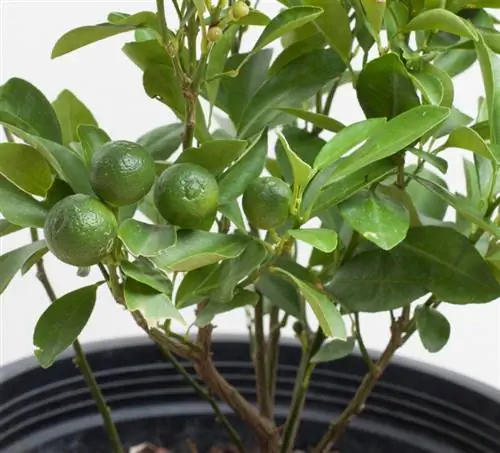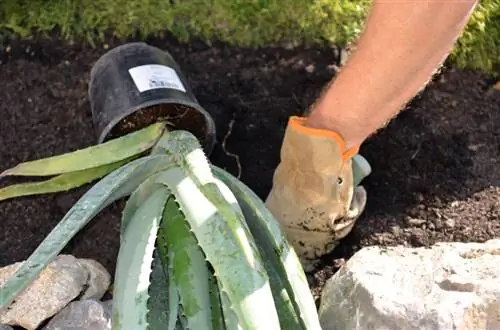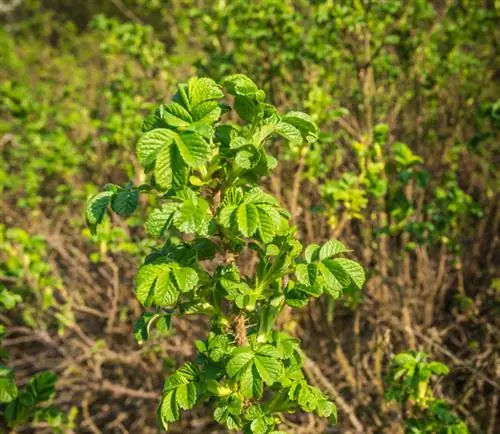- Author admin [email protected].
- Public 2023-12-16 16:46.
- Last modified 2025-01-23 11:22.
Flower cane (Canna indica) is far too good for a one-year guest appearance on the balcony and terrace. The majestic flower makes up for the lack of winter hardiness with a strong rhizome as a survival organ. These instructions explain how to skilfully overwinter Indian flower canes.

How to overwinter flower cane in winter?
In order to overwinter flower cane (Canna indica) successfully, the following steps are necessary: cut back the stems in November, dig up and clean the rhizomes, let them dry, sort out he althy tubers, store them in a dark, frost-free room and embed them in a protective medium.
Preparation in late autumn
Indian flower cane, also known as canna, is a South American perennial. When temperatures drop below freezing in late autumn, the flower retracts its above-ground plant parts. The last flowers wither, leaves wither, shoots turn brown. This process signals that remaining nutrients are being moved into the rhizomes as energy reserves for the next season. Now is the best time for this preparation work:
- At the beginning/mid of November, cut back stems to 5-10 cm
- Lift the rhizome out of the substrate with a small shovel or flower claw
- Brush off adhering soil
- Rush heavily soiled tubers with water
- Cut off damaged, rotten-brown root strands and dried hair roots with a disinfected knife (€26.00 at Amazon)
- Spin cuts with rock dust or charcoal ash
A creaking noise can sometimes be heard when digging up canna tubers. This is no cause for alarm. Continue working without worry. The creaking is caused by the numerous branches and daughter rhizomes that have formed during the summer.
Flower tube tubers overwinter in 4 steps
After the preparatory work, there are only 4 steps left to complete in order to overwinter the cane safely. This process has proven itself well in practice:
Let rhizomes dry
Flower tube tubers tend to rot. The rhizomes come out of the soil already very moist. Cleaning work and water showers further increase the level of humidity. Before winterizing, you should let the tubers dry for a few days. This is how it works:
- Place canna tubers next to each other on a wooden shelf or trellis
- Let dry for 3 to 5 days in a shady, airy, rain-protected location
Sort out canna tubers
At the end of the drying phase, carefully check each rhizome. Select the best, fleshy, undamaged tubers for winter storage. Specimens with brown, soft spots are shaky candidates with little chance of a he althy overwintering.
Determine winter quarters
All rooms in and around the house with these general conditions are suitable as winter quarters for flower canes:
- Lighting conditions: dark
- Temperature: frost-free up to a maximum of 10° Celsius
- Humidity: dry
The shortlist is therefore: basement, windowless garage or a dark attic.
Store flower cane rhizomes
You should not store flower canes openly in winter quarters. The rhizomes could dry out completely and die. Instead, overwinter the tubers wrapped in a protective medium that allows regular checks. The following options are recommended:
- Wrapping in newspaper
- Embedding in a wooden box with unfertilized coconut soil
- Deposit in a tub with sand, straw or wood chips
It is important to note that flower tube rhizomes do not touch each other. The resulting pressure points cause rot, which destroys any hope of new growth.
Tip
Please mark each tuber you dig up with a label. Next spring you will be grateful to read the information written down about the name, variety and flower color. This saves you the hassle of guessing whether you are holding the rhizome of a flower reed, a miracle flower or a dahlia.






